Hotel Park Franceschi
NOA redesigned Park Hotel Franceschi in Cortina d’Ampezzo, aiming to blend heritage with Alpine elegance, focusing on public spaces to create a refined year-round destination experience.
The historic Park Hotel Franceschi in Cortina d’Ampezzo has embarked on a renovation project under the guidance of the architecture and interior design studio NOA. The goal is to transform the establishment into a year-round destination where Cortina’s heritage and the hotel’s history merge into a new form of Alpine elegance, creating a refined and conscious mountain living experience.
Its fame precedes it: Cortina d’Ampezzo, the Queen of the Dolomites, known for its glamour and iconic ski resort, is at the heart of the latest interior design project by the South Tyrolean studio NOA. Just a short distance from Corso Italia, the historic Park Hotel Franceschi has been welcoming guests since 1922. With over a century of history, during which the hotel has undergone various expansions and renovations, the building has developed an architecture that embodies the classic Alpine style of Cortina, characterized by side turrets. With the generational change, the ownership has decided to embark on a new journey, aiming to make the hotel a year-round destination that attracts guests eager to discover a new concept of Alpine elegance.
To achieve this ambitious goal, the hotel entrusted the architects and interior designers at NOA, a studio that has emerged as a leader in Alpine hospitality design, known for offering unique architectural solutions rooted in the history and context of their projects.
The architects at NOA outlined a guiding vision and then divided the work into three phases. The first phase, which involved renovating the public spaces on the ground floor, was completed in May 2024. In the coming years, the renovation of the rooms and the expansion of the property will continue, incorporating functional upgrades with new wellness spaces.
Past and future, tradition and innovation, typicality and uniqueness were the extremes between which NOA’s interior designers navigated for the makeover of the 770 square meters of public spaces on the ground floor. The starting situation featured large, well-lit spaces, but weighed down by heavy use of wood and mouldings, bulky textiles, and an outdated colour palette. However, there were no shortage of unique pieces from the last century with fine inlays, such as wardrobes and chests, historical paintings depicting the Franceschi family, and two imposing ceramic stoves.
The hotel’s new ground floor features updated spaces dedicated to welcoming guests—a large multifunctional lobby that spans the entire floor and plays a crucial role as the first point of contact, aiming to create a lasting positive impression throughout their stay. The reception area, dominated by the historic desk with an integrated mail slot, remains the central space across the building but has been refreshed with new resin flooring that completely updates its appearance. From here, guests can easily access the right wing, where the bar, stube, and salon are sequentially located, or the left wing, which houses the breakfast buffet, the restaurant with three dining rooms, the kitchen, and the management offices.
The leitmotif of the entire project is the creation of a dialogue between the historic structure and the new interior intervention.
Past the reception area and to the right is the bar room. Comfortable seating from Gervasoni and Innova Imbottiti is arranged around the stove and beneath an elaborate vaulted ceiling, while a single row of tables is placed parallel to the large windows overlooking the surrounding peaks, accentuated by pendant lamps. In the adjacent stube, the traditional rustic Alpine chairs have been retained. The beating heart of the new ground floor is the large salon closing off the right wing, featuring an elegant coffered ceiling and expansive windows that establish a visual connection with the hotel’s park.
The left wing of the ground floor is dedicated to gastronomic functions. Here, too, tradition harmoniously meets contemporary design: an example is the glass portal leading to the buffet area. It is a light and delicate entrance that contrasts beautifully with the rich materiality of the existing vaulted ceiling. The buffet furniture, custom-made with stone tops and rounded corners, not only enhances the aesthetics of the space but is also designed to facilitate guest flow. The restaurant, with its main dining room in an L-shaped layout, is marked by a continuous alternation of white and blue chairs, cone-shaped and flat cylindrical lamps. The tables are arranged in two opposing rows, creating an atmosphere reminiscent of a Parisian promenade. An intimate room completely clad in wood serves as a separate space.

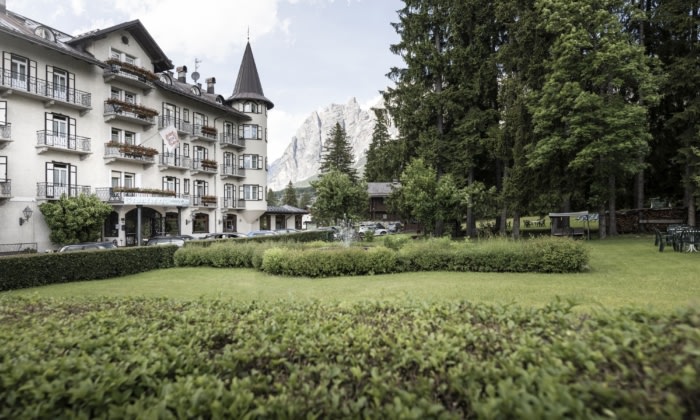

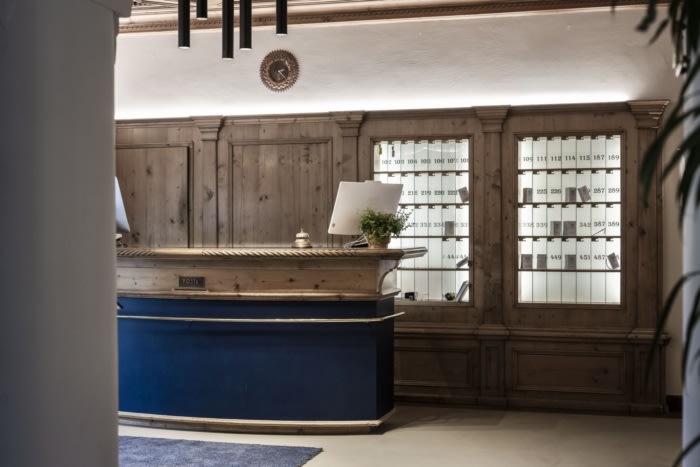
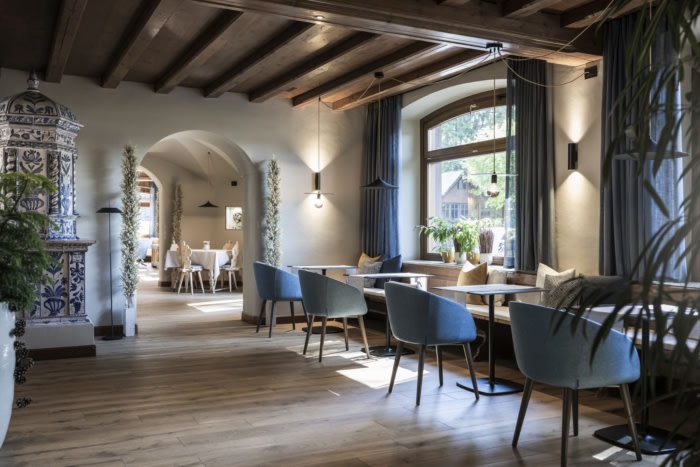
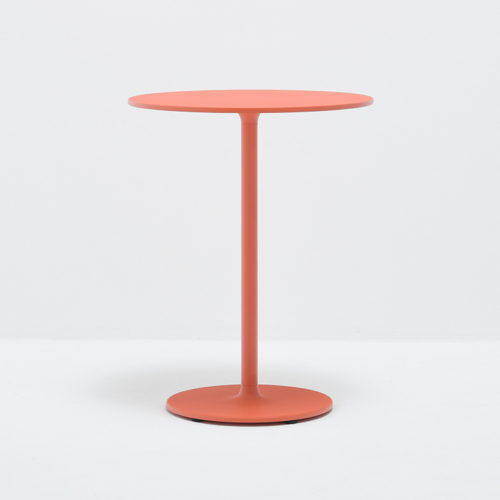

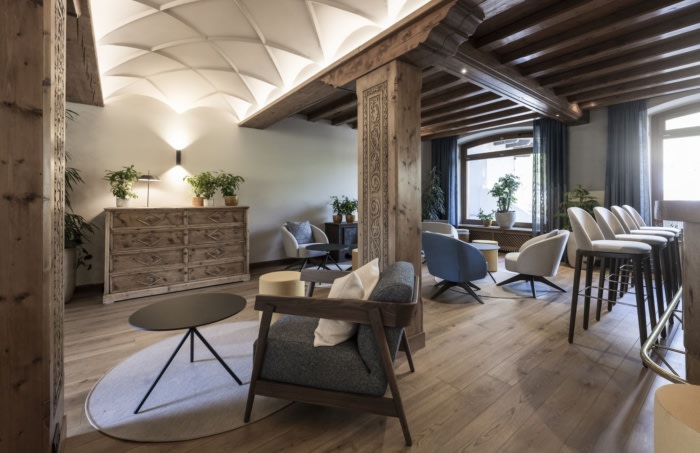


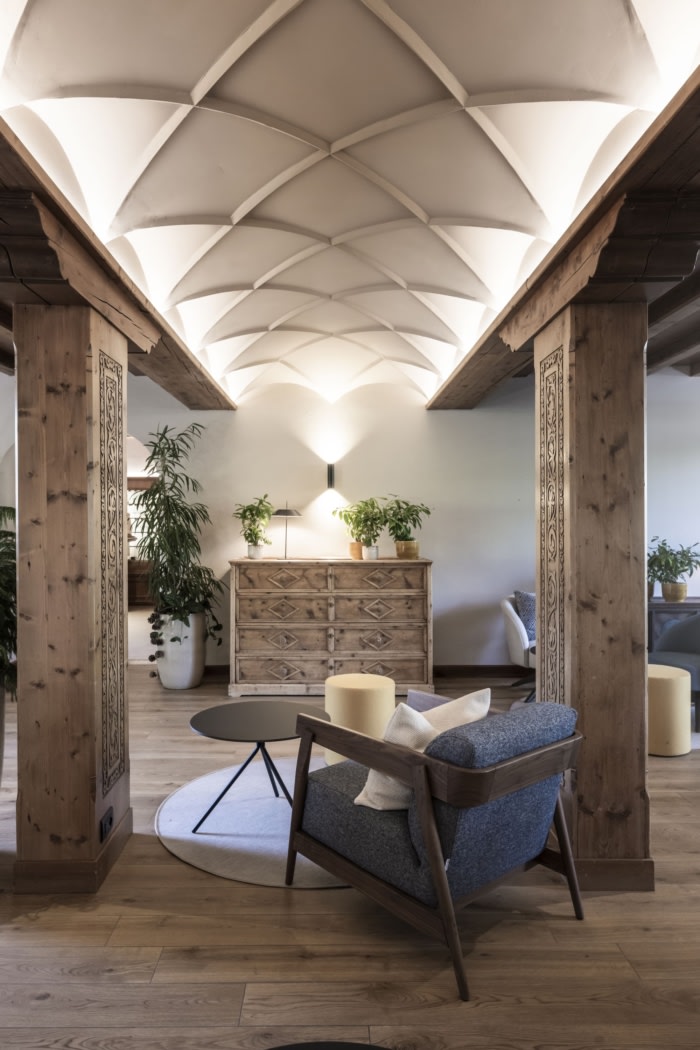
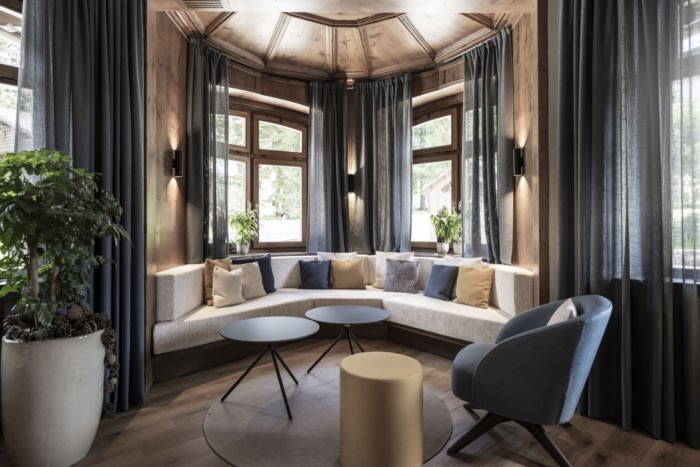


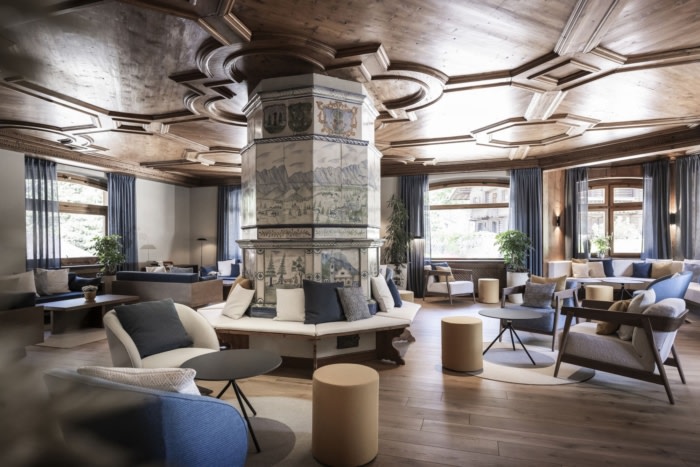
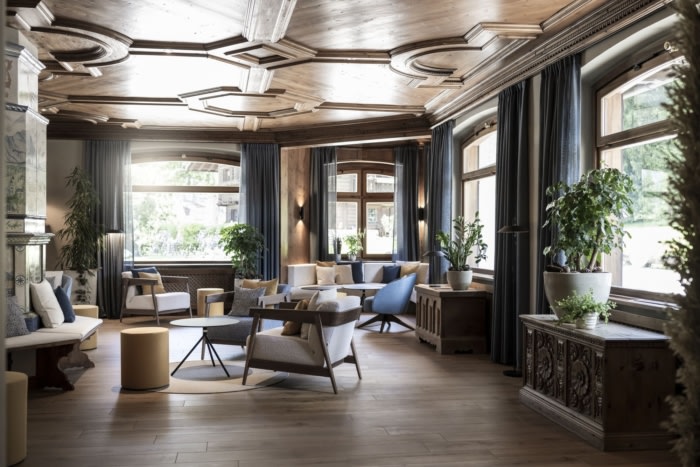
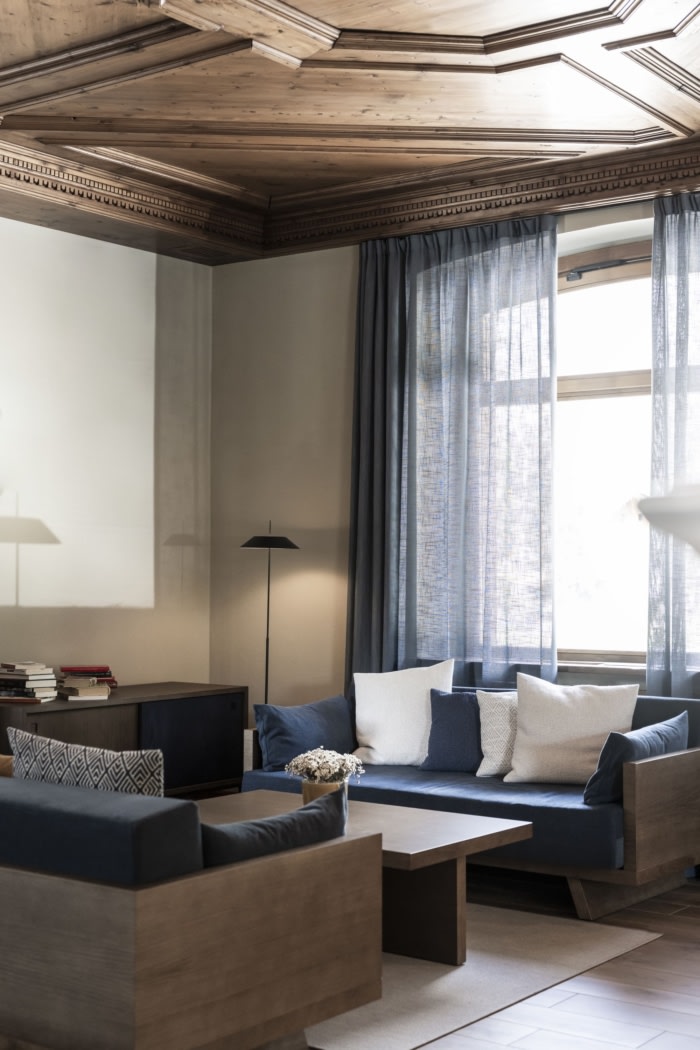

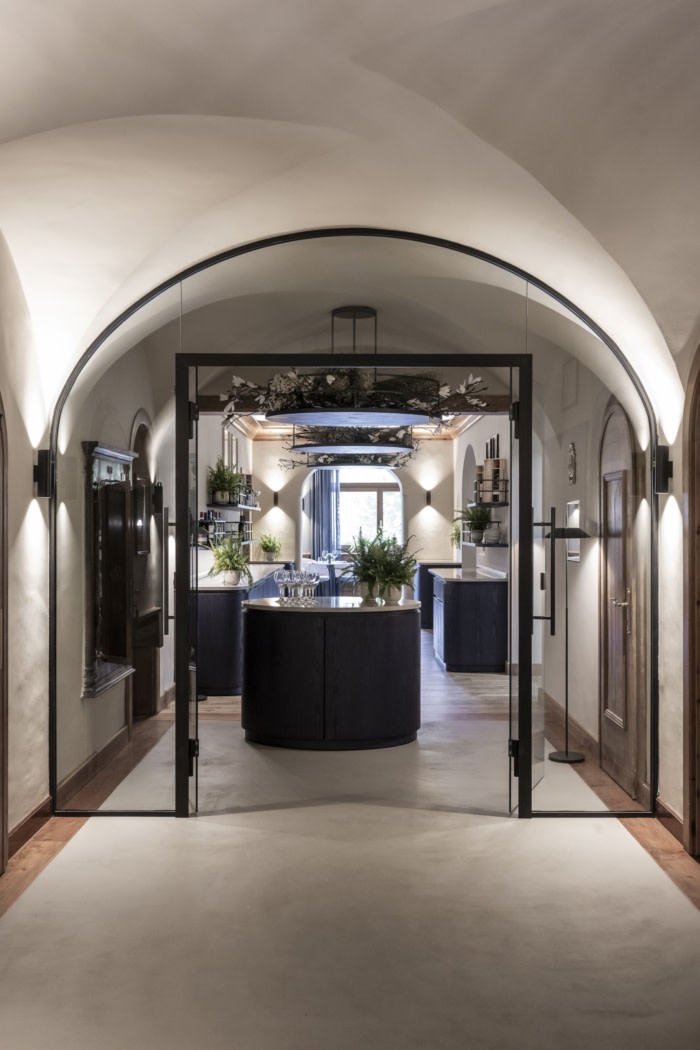

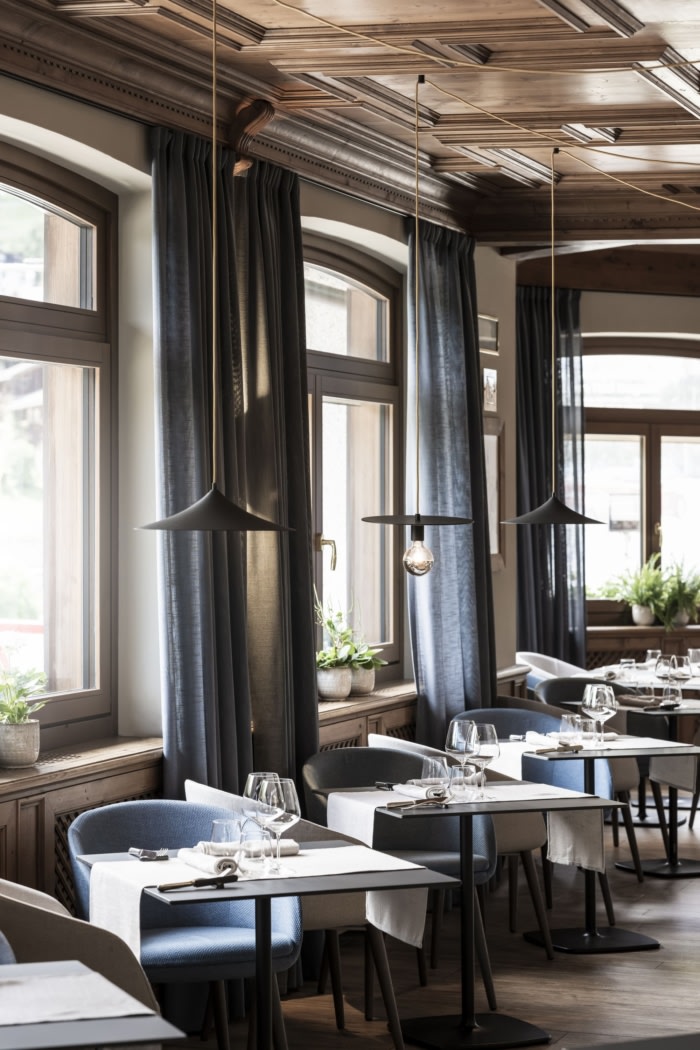




Now editing content for LinkedIn.